|
[1]
|
Amara S, Hasan HA (2012) Power system stability improvement by FACTS devices: A comparison between STATCOM, SSSC and UPFC. International Conference on Renewable Energies and Vehicular Technology, Hammamet, Tunisia.
|
|
[2]
|
Hirsch A, Parag Y, Guerrero J (2018) Microgrids: A review of technologies, key drivers, and outstanding issues. Renew Sust Energ Rev 90: 402-411. doi: 10.1016/j.rser.2018.03.040

|
|
[3]
|
Huang AQ, Crow ML, Heydt GT, et al. (2011) The future renewable rlectric rnergy delivery and management (FREEDM) System: The energy internet. Proc IEEE 99: 133-148. doi: 10.1109/JPROC.2010.2081330

|
|
[4]
|
Huber JE, Kolar JW (2019) Applicability of solid-state transformers in today's and future distribution grids. IEEE T Smart Grid 10: 317-326. doi: 10.1109/TSG.2017.2738610

|
|
[5]
|
Bui DM, Lien KY, Chen SL, et al. (2016) Standards commonly used for microgrids-a research project to develop an industry microgrid standard in Taiwan. Electr Pow Compo Sys 44: 2143-2160. doi: 10.1080/15325008.2016.1216203

|
|
[6]
|
Rodrigues WA, Santana RAS, Cota APL, et al. (2016) Integration of solid state transformer with DC microgrid system. IEEE 2nd Annual Southern Power Electronics Conference, Auckland, New Zealand.
|
|
[7]
|
McMurray W (1970) Power converter circuits having a high-frequency link. U.S. Patent 3517300.
|
|
[8]
|
Liserre M, Buticchi G, Andresen M, et al. (2018) The smart transformer: Impact on the electric grid and technology challenges. IEEE Ind Electron Mag 10: 46-58.
|
|
[9]
|
Abdelmessih GZG (2015) Design of a Three-port solid state transformer for high power applications. Universidad de oviedo, MSc. thesis, 2015. Available from: http://digibuo.uniovi.es/dspace/bitstream/10651/33643/6/TFMGuirguisZakiRUO.pdf.
|
|
[10]
|
Bifaretti S, Zanchetta P, Watson A, et al. (2011) Advanced power electronic conversion and control system for universal and flexible power management. IEEE T Smart Grid 2: 231-243. doi: 10.1109/TSG.2011.2115260

|
|
[11]
|
She X, Huang AQ, Burgos R (2013) Review of solid-state transformer technologies and their application in power distribution systems. IEEE J Emerg Sel Top Power Electron 1: 186-198. doi: 10.1109/JESTPE.2013.2277917

|
|
[12]
|
Huber JE, Kolar JW (2016) Solid-state transformers on the origins and evolution of key concept. IEEE Ind Electron Mag 10: 19-28. doi: 10.1109/MIE.2016.2588878

|
|
[13]
|
Siada AA, Budiri J, Abdou AF (2018) Solid state transformers topologies, controllers, and applications: state-of-the-art literature review. Electronics 7: 298-316. doi: 10.3390/electronics7110298

|
|
[14]
|
She X, Ni X, Huang AQ, et al. (2013) System integration and hierarchical power management strategy for a solid-state transformer interfaced microgrid system. IEEE T Power Electron 29: 4415-4425.
|
|
[15]
|
She X, Huang AQ, Lukic S, et al. (2012) On integration of solid state transformer with zonal microgrid. IEEE T Smart Grid 3: 975-985. doi: 10.1109/TSG.2012.2187317

|
|
[16]
|
Smith L, Sorkin M, Reddick R (2011) Cape Light Compact: A case study of energy transition. University of Colorado-Denver. Available from: http://cudenverenergystudio.weebly.com/uploads/7/3/1/3/7313776/clc_final_paper.pdf.
|
|
[17]
|
Hunziker C, Schulz N (2017) Potential of solid-state transformers for grid optimization in existing low-voltage grid environments. Electr pow syst res 146: 124-131. doi: 10.1016/j.epsr.2017.01.024

|
|
[18]
|
Bosich D, Vicenzutti A, Pelaschiar R, et al. (2015) Toward the future: The MVDC large ship research program. AEIT International Annual Conference, Naples, Italy.
|
|
[19]
|
She X, Huang AQ, Wang F, et al. (2013) Wind energy system with integrated functions of active power transfer, reactive power compensation, and voltage conversion. IEEE T Ind Electron 60: 4512-4524. doi: 10.1109/TIE.2012.2216245

|
|
[20]
|
Carrasco JM, Franquelo LG, Bialasiewicz JT, et al. (2006) Power electronic systems for the grid integration of renewable energy sources: A survey. IEEE T Ind Electron 53: 1002-1016. doi: 10.1109/TIE.2006.878356

|
|
[21]
|
Gao R, Husain I, Wang F, et al. (2015) Solid-state transformer interfaced PMSG wind energy conversion system. 2015 IEEE Applied Power Electronics Conference and Exposition, Charlotte, NC, USA.
|
|
[22]
|
Das MK, Capell C, Grider DE, et al. (2011) 10 kV, 120 A SiC half H-bridge power MOSFET modules suitable for high frequency, medium voltage applications. IEEE Energy Convers Congr Expo 2689-2692.
|
|
[23]
|
Bignucolo F, Bertoluzzo M, Fontana C (2015) Applications of the solid state transformer concept in the electrical power system. AEIT International Annual Conference (AEIT), Naples, Italy.
|
|
[24]
|
She X (2013) Control and design of a high voltage solid state transformer and its integration with renewable energy resources and microgrid system. North Carolina State University, Raleigh, North Carolina. Available from: https://repository.lib.ncsu.edu/bitstream/handle/1840.16/9027/etd.pdf?sequence=1&isAllowed=y.
|
|
[25]
|
Rodrigues WA, Morais LMF, Oliveira TR, et al. (2017) Analysis of solid state transformer based microgrid system. 2016 IEEE International Conference on Industry Applications (INDUSCON), Curitiba, Brazil.
|
|
[26]
|
Islam MR, Muttaqi KM, Sutanto D, et al. (2018) Design and implementation of amorphous magnetic material common magnetic bus for the replacement of common DC bus. IEEE T Magn 54: 1-4. doi: 10.1109/TMAG.2018.2889566

|
|
[27]
|
Urbano FV, Alvarado MSA (2017) Power quality with solid state transformer integrated smart-grids. IEEE PES Innovative Smart Grid Technologies Conference, Quito, Ecuador.
|
|
[28]
|
Wang L, Zhang D, Wang Y, et al. (2016) Power and voltage balance control of a novel three-phase solid-state transform er using multilevel cascaded H-bridge inverters for microgrid applications. IEEE T Power Electron 31: 3289-3301. doi: 10.1109/TPEL.2015.2450756

|
|
[29]
|
Khan MO, Jamali SZ, Noh CH, et al. (2018) A Load flow analysis for AC-DC hybrid distribution network incorporated with distributed energy resources for different grid scenarios. Energy 11: 367-382.
|
|
[30]
|
Ortiz G, Leibl MG, Huber JE, et al. (2017) Design and experimental testing of a resonant DC-DC converter for solid state transformers. IEEE T Power Electron 32: 7534-7542. doi: 10.1109/TPEL.2016.2637827

|
|
[31]
|
Leung C, Dutta S, Baek S, et al. (2010) Design considerations of high voltage and high frequency transformer for solid state transformer application. Annual Conference on IEEE Industrial Electronics Society, Glendale, AZ, USA.
|
|
[32]
|
Ortiz G, Leibl M, Kolar JW, et al. (2013) Medium frequency transformers for solid-state-transformer applications-design and experimental verification. IEEE International Conference on Power Electronics and Drive Systems, Kitakyushu, Japan.
|
|
[33]
|
Ronan ER, Sudhoff SD, Glover SF, et al. (2002) A power electronic-based distribution transformer. IEEE T Power Deliver 17: 537-543. doi: 10.1109/61.997934

|
|
[34]
|
Harada K, Anan F, Yamasaki K, et al. (1996) Intelligent transformer. IEEE Power Electronics Specialists Conference, Baveno, Italy.
|
|
[35]
|
Sanduleac M, Martins JCD, Ciornei I, et al. (2018) Resilient and immune by design microgrids using solid state transformers. Energy 11: 3377-3396.
|
|
[36]
|
Smolenski R, Jarnut M, Benysek G, et al. (2011) CM voltage compensation in AC/DC/AC interfaces for smart grids. Bull Pol Acad Sci 59: 513-523.
|
|
[37]
|
Lopez M, Rodriguez A, Blanco E, et al. (2015) Design and implementation of the control of a MMC based solid state transformer. IEEE International Conference on Industrial Informatics, Cambridge, UK.
|
|
[38]
|
Zhang J, Wang Z, Shao S (2017) A three-phase modular multilevel DC-DC converter for power electronic transformer applications. IEEE J Emerg Sel Top Power Electron 5: 140-150. doi: 10.1109/JESTPE.2016.2609936

|
|
[39]
|
Kaushik RA, Pindoriya NM (2014) A hybrid AC-DC microgrid: opportunities & key issues in implementation. International Conference on Green Computing Communication and Electrical Engineering, Coimbatore, India.
|
|
[40]
|
Guillod T, Krismer F, Färber R, et al. (2015) Protection of MV/LV solid-state transformers in the distribution grid. Annual Conference of the IEEE Industrial Electronics Society, Yokohama, Japan.
|
|
[41]
|
Islam MR, Mahfuz-Ur-Rahman AM, Muttaqi KM, et al. (2019) State-of-the-art of the medium-voltage power converter technologies for grid integration of solar photovoltaic power plants. IEEE T Energ Convers 34: 372-384. doi: 10.1109/TEC.2018.2878885

|
|
[42]
|
Falcones S, Mao X, Ayyanar R (2010) Topology comparison for solid state transformer implementation. IEEE PES General Meeting, Providence, RI, USA.
|
|
[43]
|
Khan MTA, Milani AA, Chakrabortty A, et al. (2017) Dynamic modelling and feasibility analysis of a solid state transformer based power distribution system. IEEE T Ind Appl 54: 551-561.
|
|
[44]
|
Kolar JW, Ortiz G (2014) Solid-state-transformers: key components of future traction and smart grid systems. Proceedings of the International Power Electronics Conference Asia, Hiroshima, Japan.
|
|
[45]
|
Friedeman M, Timmeren AV, Boelman E, et al. (2008) Concept for a DC‐low voltage house. Smart Sustainable Built Environ 2008: 85-94.
|
|
[46]
|
Oggier GG, Garcla GO, Oliva AR (2009) Switching control strategy to minimize dual active bridge converter losses. IEEE T Power Electron 24: 1826-1838. doi: 10.1109/TPEL.2009.2020902

|
|
[47]
|
Gajowik T, Rafał K, Malinowski M (2017) Review of multilevel converters for application in solid state transformers. Przegl Elektrotech 1: 3-7.
|
|
[48]
|
Costa L, Buticchi G, Liserre M (2018) Quad-active-bridge DC-DC converter as cross-link for medium voltage modular inverters. IEEE T Ind Appl 53: 1243-1253.
|
|
[49]
|
Rahman MA, Islam MR, Muttaqi KM, et al. (2019) Modelling and control of SiC-based high-frequency magnetic linked converter for next generation solid state transformers. IEEE T Energ Convers, Early Access.
|
|
[50]
|
Wang L, Zhang D, Wang Y (2016) Power and voltage balance control of a novel three-phase solid-state transformer using multilevel cascaded H-Bridge inverters for microgrid applications. IEEE T Power Electron 31: 3289-3301. doi: 10.1109/TPEL.2015.2450756

|
|
[51]
|
Mao X, Ayyanar R, Falcones S, et al. (2009) Interleaved AC-AC flyback topology for solid state transformer. FREEDM Annual Conference 2009, North Carolina State University, Raleigh, NC.
|
|
[52]
|
Vangen K, Melaa T, Adnanes AK (1992) Soft-switched high-frequency, high power DC/AC converter with IGBT. IEEE Power Electronics Specialists Conference, Toledo, Spain.
|
|
[53]
|
Agrawal, Nalamati C, Gupta R (2018) Hybrid DC/AC zonal microgrid enabled by Solid- State transformer and Centralized ESD Integration. IEEE T Ind Electron 66: 9097-9107.
|
|
[54]
|
She X, Lukic S, Huang AQ (2010) DC zonal micro-grid architecture and control. Annual Conference on IEEE Industrial Electronics Society, Glendale, USA.
|
|
[55]
|
Das D, Hrishikesan VM, Kumar C (2018) Smart transformer based hybrid LVAC and LVDC interconnected microgrid. IEEE 4th Southern Power Electronics Conference 2018: 1-7.
|
|
[56]
|
Liu B, Zha Y, Zhang T, et al. (2016) Solid state transformer application to grid connected photovoltaic inverters. 2016 International Conference on Smart Grid and Clean Energy Technologies, Chengdu, China.
|
|
[57]
|
She X, Huang AQ, Bhattacharya S, et al. (2011) Performance evaluation of solid state transformer based microgrid in FREEDM Systems. 2011 Applied Power Electronics Conference and Exposition, Fort Worth, TX, USA.
|
|
[58]
|
Olivares DE, Sani AM, Etemadi AH, et al. (2014) Trends in microgrid control. IEEE T Smart Grid 5: 1905-1919. doi: 10.1109/TSG.2013.2295514

|
|
[59]
|
Sen S, Kumar V (2018) Microgrid control: A comprehensive survey. Annu Rev control 45: 118-151. doi: 10.1016/j.arcontrol.2018.04.012

|
|
[60]
|
She X, Huang A, Yu X, et al. (2018) Control of solid-state transformer-enabled DC microgrids. DC Distribution Syst and Microgrids, London, United Kingdom.
|
|
[61]
|
Liu B, Zha Y, Zhang, et al. (2016) Fuzzy logic control of dual active bridge in solid state transformer applications. Tsinghua University-IET Electrical Engineering Academic Forum, Beijing, China.
|
|
[62]
|
Açikgöz H, Kececioglu OF, Karadöl I, et al. (2017) Adaptive control of solid state transformer using type-2 fuzzy neural system. Stud Inf Control 26: 171-182.
|
|
[63]
|
Zhao T, Zeng J, Bhattacharya S, et al. (2009) An average model of solid state transformer for dynamic system simulation. IEEE Power & Energy Society General Meeting, Calgary, AB, Canada.
|
|
[64]
|
Meng L, Shafiee Q, Trecate GF, et al. (2017) Review on control of DC microgrids and multiple microgrid clusters. IEEE J Emerg Sel Top Power Electron 5: 928-948.
|
|
[65]
|
Cheng H, Gong Y, Gao Q (2015) The research of coordination control strategy in cascaded multilevel solid state transformer. 2015 IEEE International Conference on Mechatronics and Automation, Beijing, China.
|
|
[66]
|
Khan MTA, Cisneros R, Chakrabortty A, et al. (2019) Coordinated control of energy storage in networked microgrids under unpredicted load demands. American Control Conference, Philadelphia, USA.
|
|
[67]
|
Costa L, Buticchi G, Liserre M (2017) Quad-active-bridge DC-DC converter as cross-link for medium voltage modular inverters. IEEE T Ind Appl 53: 1243-1253. doi: 10.1109/TIA.2016.2633539

|
|
[68]
|
Carne GD, Buticchi G, Liserre M, et al. (2016) Load control using sensitivity identification by means of smart transformer. IEEE T Smart Grid 9: 2606-2615.
|
|
[69]
|
Gao X, Carne GD, M. Liserre, et al. (2016) Increasing integration of wind power in medium voltage grid by voltage support of smart transformer. Proc Wind Europe 2016: 1-7.
|












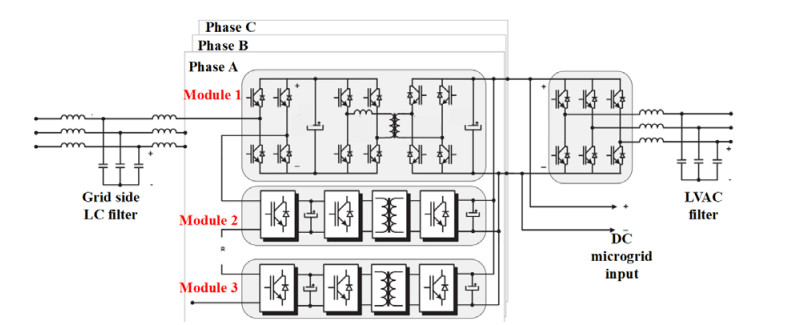
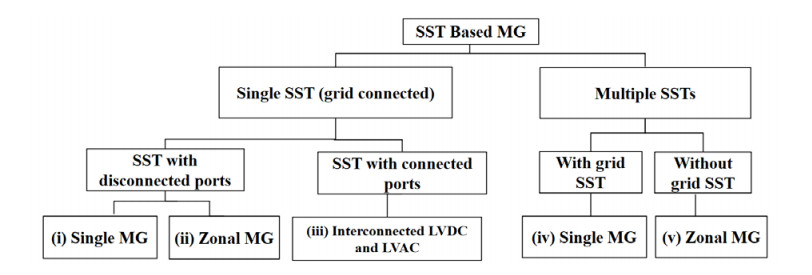
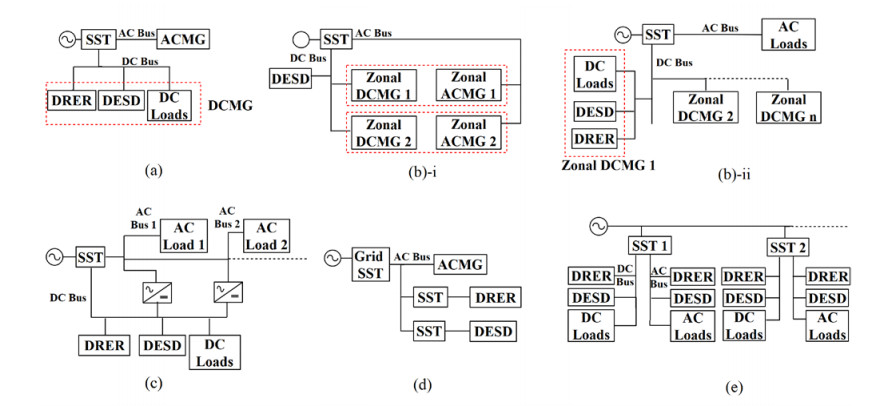
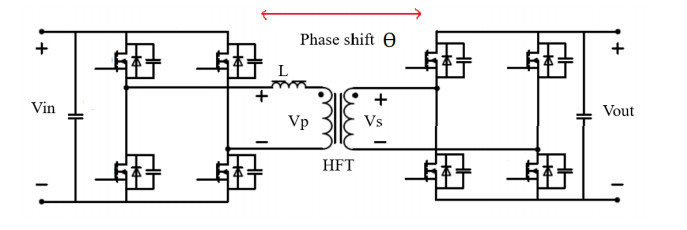
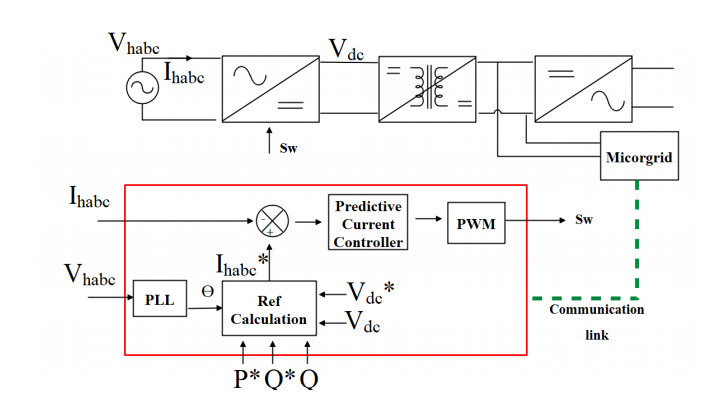
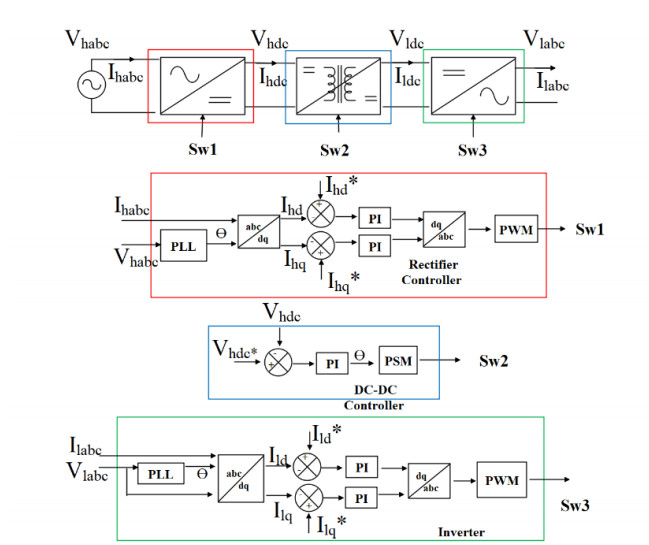


 DownLoad:
DownLoad: